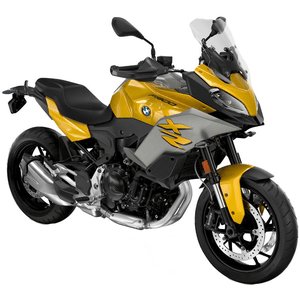BMW F 900 XR [2020–2022]: A Modern Adventure Sport Companion That Thrills Beyond the Pavement
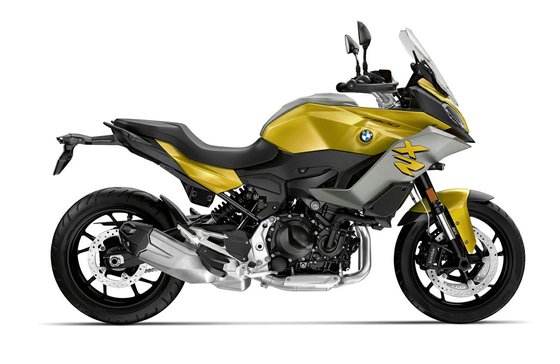
Introduction
The BMW F 900 XR represents a fascinating paradox: it’s a motorcycle that feels equally at home carving twisty mountain roads as it does devouring endless highway miles. Introduced in 2020 as part of BMW’s mid-range "Adventure Sport" lineup, this machine bridges the gap between sport-touring precision and the upright, exploratory spirit of BMW’s GS series. After spending a week with a 2022 model, it’s clear why this generation has become a favorite for riders seeking versatility without compromise. Whether you’re a commuter craving weekend escape routes or a seasoned tourer looking for agility, the F 900 XR demands attention—and respect.
Design & Ergonomics: Where Sport Meets Adventure
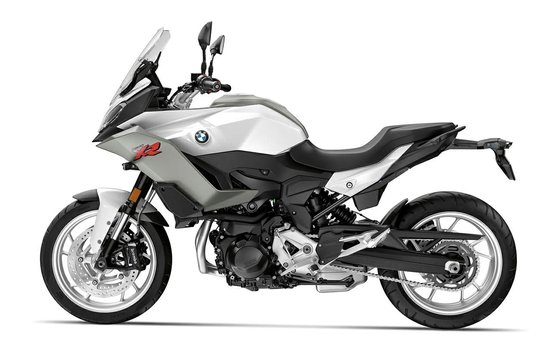
The F 900 XR’s design language screams "adventure-ready" without sacrificing sophistication. Its sharp, angular fairing and LED headlamps give it a futuristic edge, while the adjustable windshield (a godsend at highway speeds) and 825 mm (32.5 inches) seat height strike a balance between commanding visibility and accessibility. BMW offers multiple seat configurations, including a low seat option at 795 mm (31.3 inches), making it approachable for shorter riders.
The cockpit is a masterclass in ergonomic design. The handlebars are wide enough for leverage in corners but narrow enough to filter through traffic, and the footpegs sit in a relaxed, neutral position. Even after a 300-km (186-mile) day, fatigue is minimal—a testament to BMW’s focus on long-haul comfort. The 15.5-liter (4.1-gallon) fuel tank sits low, contributing to a centered feel, while the sculpted saddle supports spirited riding without pinching.
Color options like Racing Red and Galvanic Gold Metallic add flair, but it’s the subtle details—like the steel bridge frame’s exposed welds or the asymmetrical exhaust—that remind you this is a BMW: purposeful, not pretentious.
Performance: Twin-Cylinder Heart with a Split Personality
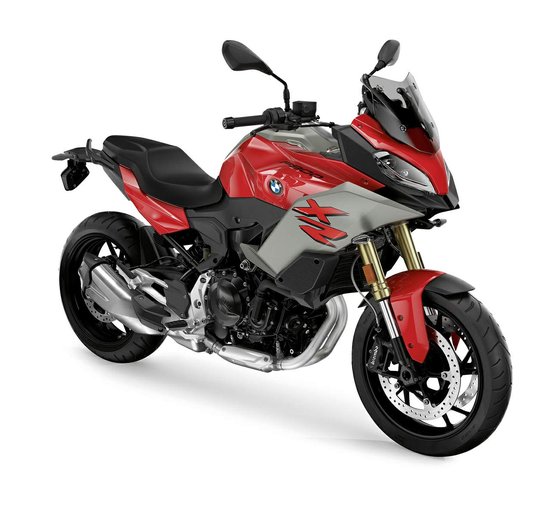
At the core of the F 900 XR lies a 895cc parallel-twin engine, producing 105 HP (77 kW) at 8,500 RPM and 92 Nm (67.9 lb-ft) of torque peaking at 6,500 RPM. These numbers don’t just look good on paper—they translate to a ride that’s both exhilarating and refined.
Low-to-Mid Range Grunt:
Twist the throttle below 4,000 RPM, and the engine responds with a linear, almost velvety push. This isn’t a fire-breathing superbike; it’s a calculated surge of power perfect for overtaking or climbing inclines. The twin’s 270/450-degree firing order mimics a V-twin’s character, complete with a throaty exhaust note that’s more "growl" than "buzz."
Top-End Precision:
Past 6,000 RPM, the XR transforms. The DOHC engine thrives on aggression, pulling hard up to its 9,000 RPM redline. Acceleration from 0–100 km/h (0–62 mph) takes roughly 3.7 seconds, but it’s the mid-corner acceleration that impresses most. The chain final drive and anti-hopping clutch ensure power delivery remains crisp, even during aggressive downshifts.
Handling & Suspension:
With a wheelbase of 1,521 mm (59.9 inches) and a kerb weight of 219 kg (482.8 lbs), the XR feels surprisingly nimble. The 43 mm USD fork and rear monoshock (172 mm/6.8 inches of travel) are tuned for sporty compliance—stiff enough to inspire confidence during hard braking yet supple over potholes.
Braking:
Dual 320 mm front discs with radial 4-piston calipers provide stoic braking power. Combined with BMW’s ABS Pro (optional), even panic stops on wet roads feel controlled. The rear 265 mm disc is less communicative but adequate for balance.
Technology & Features: A Mid-Range Tech Powerhouse
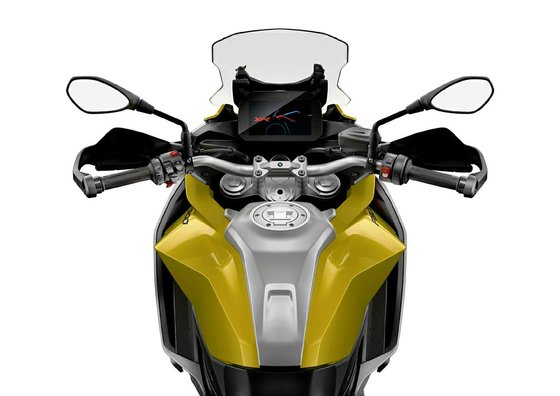
BMW packed the F 900 XR with segment-leading tech:
- 6.5-inch TFT Display: Crisp, customizable, and sunlight-readable. Apple CarPlay integration (via BMW Connectivity) turns navigation into a breeze.
- Riding Modes: Standard Rain and Road modes adjust throttle response and traction control. Opt for the Pro package, and Dynamic mode sharpens everything—throttle, suspension, ABS—for track-like aggression.
- Adaptive Cornering Light (Optional): A rarity in this class, it illuminates bends like a spotlight, boosting night-riding confidence.
- Keyless Ride & Emergency Call: Premium touches that simplify life on the road.
The LED lighting suite is brilliant, with high beams casting a 150-meter (492-foot) arc. Heated grips (optional) are a winter lifesaver, while the quickshifter (Shift Assistant Pro) delivers buttery-smooth up/down shifts.
Competition: How the F 900 XR Stacks Up
The Adventure Sport segment is fiercely contested. Here’s how the BMW holds its ground:
1. Ducati Multistrada 950
- Pros: L-twin drama, sublime electronics, Italian flair.
- Cons: Higher seat (840 mm/33.1 inches), pricier maintenance.
- BMW Edge: The XR’s torque curve is friendlier at low RPMs, and its TFT interface is more intuitive.
2. Yamaha Tracer 9 GT
- Pros: CP3 triple-cylinder engine, lighter feel, standard quickshifter.
- Cons: Less wind protection, plasticky build quality.
- BMW Edge: The XR’s suspension adjustability and optional cornering lights cater to tech-focused riders.
3. Triumph Tiger 900 GT
- Pros: Triple-cylinder character, off-road capability, 20-liter fuel tank.
- Cons: Heavier (220 kg/485 lbs), softer suspension.
- BMW Edge: The XR’s road manners are sharper, and its electronics package feels more modern.
Verdict: The F 900 XR isn’t the cheapest or most powerful in its class, but it strikes a rare balance between sport-touring precision and everyday usability. It’s the Swiss Army knife of mid-weight ADV bikes.
Maintenance: Keeping Your XR in Peak Condition
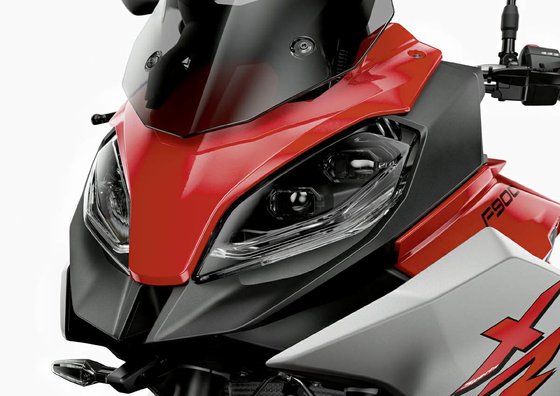
Owning an F 900 XR is relatively painless, but adherence to BMW’s maintenance schedule is key:
Engine & Oil
- Oil Changes: Every 10,000 km (6,214 miles) using SAE 5W-40. Capacity is 3.0 liters (3.17 quarts) with filter.
- Spark Plugs: NGK LMAR8J-9E. Replace every 20,000 km (12,427 miles).
- Coolant: Use BMW’s "Wasser+" formula. Flush every 4 years or 50,000 km (31,068 miles).
Chain & Sprockets
- The 17/44 sprocket combo favors acceleration. Clean and lube the O-ring chain every 500 km (311 miles). MOTOPARTS.store recommends DID VX3 chains for extended durability.
Brakes
- Fluid: Replace DOT 4 every 2 years.
- Pads: Brembo sintered pads (compatible with OEM calipers) reduce fade during spirited riding.
Tires
- Stock sizes: 120/70-ZR17 front, 180/55-ZR17 rear. Maintain 2.5 bar (36 psi) front and 2.9 bar (42 psi) rear. For touring, consider Metzeler Roadtec 01s; for grip, Pirelli Diablo Rosso IVs.
Suspension
- Service the USD fork seals every 40,000 km (24,854 miles). The rear shock’s hydraulic preload adjuster simplifies load management.
Pro Tip: Invest in a diagnostic tool to reset service indicators. MOTOPARTS.store offers OBD-II adapters compatible with BMW’s CANbus system.
Conclusion: The XR’s Lasting Appeal
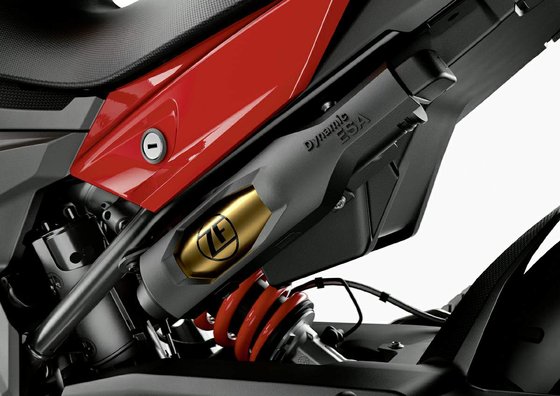
The BMW F 900 XR isn’t just a motorcycle—it’s a gateway to endless possibilities. It’s as comfortable threading through urban sprawl as it is exploring alpine passes, all while wrapped in tech that rivals bikes twice its price. For riders seeking a do-it-all machine that refuses to compromise, this generation of the XR remains a benchmark.
Whether you’re upgrading suspension, tweaking ergonomics, or chasing more power, MOTOPARTS.store has the OEM and aftermarket solutions to make your XR uniquely yours. After all, adventure isn’t just about where you go—it’s about how your bike evolves with you.





